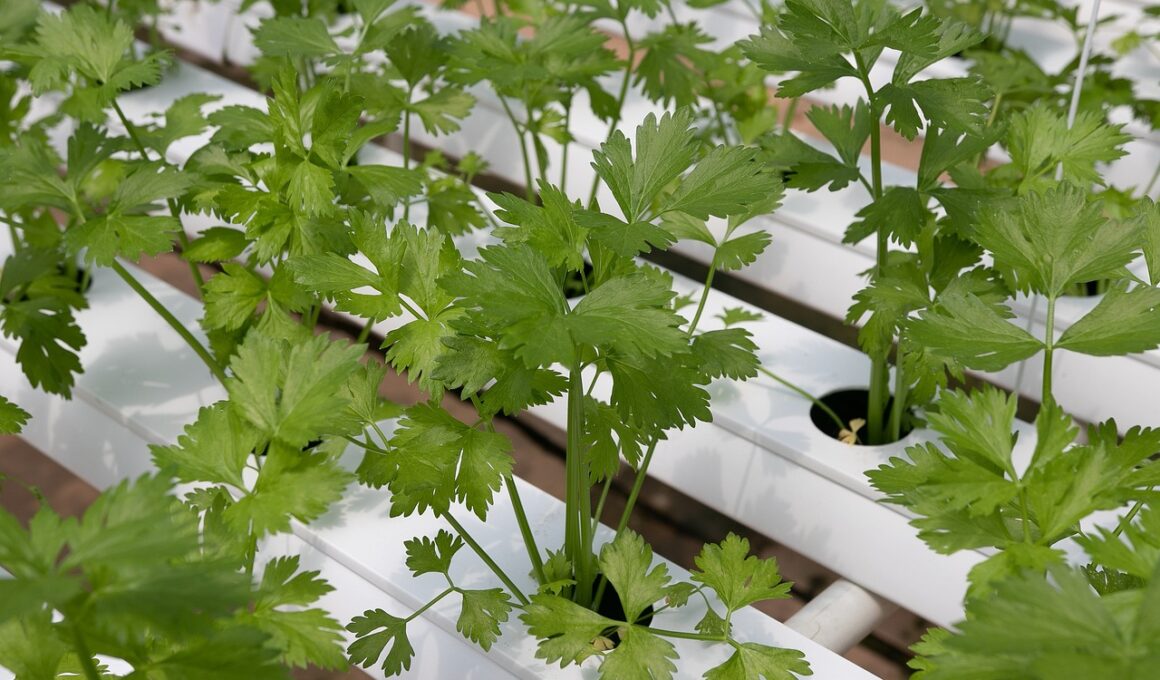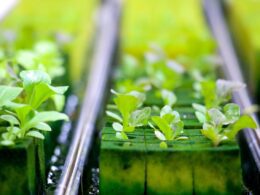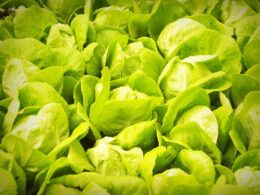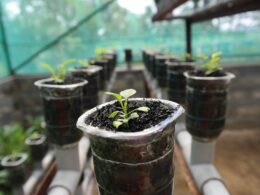Are you considering growing plants hydroponically? While this method has its benefits, such as saving space and water, it’s important to know that not all plants are suited for hydroponic growing. In fact, some plants may not survive at all without soil.
But don’t fret, with the right knowledge and preparation, you can successfully grow a variety of plants using hydroponics.
In this article, we’ll explore which plants are best suited for hydroponic growing and which ones may not thrive in this environment. We’ll also provide tips for successful hydroponic growing, so you can ensure your plants not only survive, but thrive.
So if you’re ready to dive into the world of hydroponics and learn more about which plants are best suited for this method, keep reading!
The Basics of Hydroponics
You’ll quickly learn the fundamental principles of hydroponics and how to establish a flourishing hydroponic garden. Hydroponic growing is a method of cultivating plants without using soil. Instead, plants are grown in water that is rich in nutrients. This method is becoming increasingly popular due to its many benefits.
Compared to traditional soil-based growing, hydroponics is a more efficient and effective way of growing plants. With hydroponics, you can grow more plants in a smaller space. This is because plants grown in water don’t have to compete for nutrients like they do in soil. Additionally, hydroponic plants grow faster and bigger since they don’t have to devote energy to searching for nutrients.
The benefits of hydroponic growing go beyond just efficiency. Hydroponic plants are less susceptible to pests and diseases since they are grown in a controlled environment. They also require less water than traditional soil-based plants.
With hydroponics, you can have a flourishing garden year-round, regardless of the weather outside.
Plants Suited for Hydroponic Growing
Plants suited for hydroponic growing are highly dependent on environmental factors and nutrient solutions. However, many plants can thrive in hydroponic setups compared to traditional soil growing. Hydroponics offer faster growth rates, higher yields, and the ability to grow crops year-round.
Some commonly grown plants in hydroponics include leafy greens like lettuce, kale, and spinach, as well as herbs like basil and mint. These plants have short growth cycles and are easy to maintain in a hydroponic system.
Other plants that can do well in hydroponics are tomatoes, peppers, and cucumbers. These plants require more attention and specific nutrient ratios, but can still thrive in a hydroponic environment.
Compared to traditional soil growing, hydroponics provide a more controlled and efficient growing environment. Plants are grown in a soil-free medium, reducing the risk of pests and diseases. Water and nutrient solutions can also be recycled, reducing waste and conserving resources.
With the right setup and care, almost any plant can survive in a hydroponic system, making it a versatile and sustainable option for growers.
Plants Not Suited for Hydroponic Growing
If you’re looking to grow plants that require specific soil conditions or extensive root systems, hydroponics may not be the best fit for your needs. For instance, plants like carrots, potatoes, and beets are difficult to grow in a hydroponic system because they require a lot of space for their roots to spread out. Furthermore, these crops can be sensitive to changes in light, temperature, and humidity, which can be difficult to control in a hydroponic environment.
Other plants to avoid when it comes to hydroponic growing include those that rely on beneficial soil microorganisms for their growth, such as legumes and other nitrogen-fixing plants. These crops need a healthy soil ecosystem to thrive, which can be difficult to replicate in a hydroponic setup. Additionally, plants like strawberries, blueberries, and other fruit trees may not produce as much fruit in a hydroponic system, since they require a certain amount of space and nutrients to bear fruit.
If you’re interested in growing plants that aren’t well-suited to hydroponics, there are alternative growing methods you can try. Container gardening, raised bed gardening, and vertical gardening are all great options for growing plants that require more space or specific soil conditions. These methods allow you to control the soil mix, water, and nutrients your plants receive, while also giving them ample space to grow and spread out.
So don’t be discouraged if hydroponics isn’t the right fit for your desired crops – there are plenty of other ways to grow healthy, thriving plants.
Are There Any Plants That Require Less Sun in Hydroponics?
Many plants in hydroponics, especially leafy greens, have lower hydroponics lighting requirements compared to those grown in traditional soil. These plants thrive in partial shade or indirect sunlight, allowing them to grow well with less sun exposure. By adjusting the intensity and duration of the artificial lights used in hydroponics systems, it is possible to provide the optimal lighting conditions for these plants while reducing their dependency on natural sunlight.
Tips for Successful Hydroponic Growing
If you want to succeed in hydroponic growing, there are three key points to keep in mind.
First, you need to manage your nutrients properly, ensuring that your plants are getting the right balance of minerals and vitamins.
Second, you should pay close attention to the quality of your water, making sure that it’s free from contaminants and pH-balanced.
Finally, you need to provide sufficient lighting to help your plants grow and thrive.
By focusing on these three areas, you can create a thriving hydroponic garden that produces healthy, vibrant plants.
Proper Nutrient Management
Proper nutrient management is key to ensuring the success of your hydroponic garden, and it’s essential to understand the specific needs of each plant you grow.
This means paying close attention to pH control and monitoring for nutrient deficiencies. pH control is important because different plants have varying pH preferences, and maintaining the appropriate pH level in your system will ensure that your plants absorb nutrients effectively.
Nutrient deficiencies, on the other hand, can lead to stunted growth, yellowing leaves, and poor yields, so it’s crucial to check your plants regularly for signs of deficiency.
One way to manage nutrients in your hydroponic garden is to use a high-quality nutrient solution that is specifically formulated for hydroponic growing. These solutions contain all of the essential nutrients that your plants need, and they usually come in a two-part system that allows you to adjust the nutrient levels according to your plants’ needs.
It’s also important to regularly test your nutrient solution to ensure that it’s within the appropriate range for your plants.
By maintaining proper nutrient management in your hydroponic garden, you can ensure that your plants stay healthy and vibrant, and you’ll be rewarded with bountiful harvests.
Water Quality
Maintaining good water quality is crucial to the success of your hydroponic garden. The water source can directly impact the health and growth of your plants. Make sure to use clean, filtered water to prevent any harmful bacteria or chemicals from harming your crops.
Additionally, it’s important to regularly check the pH levels of your water. This will ensure that they are within the appropriate range for your specific plants. Waterlogged roots can drown your crops, so it’s important to monitor the level of water in your system and make sure it’s not too high.
At the same time, you need to make sure your plants are receiving enough water to thrive. By properly managing the water quality in your hydroponic garden, you can help ensure the health and vitality of your plants. This will lead to a successful harvest.
Lighting
Now that we’ve discussed the importance of water quality in hydroponics, let’s move on to another crucial factor: lighting. Without proper lighting, your plants won’t be able to grow and thrive.
In hydroponics, it’s important to understand the different aspects of light spectrum and light intensity. Light spectrum refers to the different wavelengths of light that plants need to grow. Plants primarily use blue and red light for photosynthesis, but they also need other wavelengths for optimal growth.
Some types of lights, such as fluorescent and LED, can be adjusted to provide the right spectrum for your plants. Light intensity, on the other hand, refers to the amount of light that plants receive. Different types of plants require different levels of light intensity, so it’s important to choose the right type of light and adjust it accordingly.
By paying attention to both light spectrum and intensity, you can ensure that your plants have the best possible growing conditions in your hydroponic system.
Conclusion and Future of Hydroponic Growing
The future of hydroponic growing is bright, with endless possibilities for innovative and sustainable agriculture techniques. Despite the challenges faced in the early stages of hydroponic growing, new innovations have made it possible to grow almost any plant in a hydroponic system.
This means that the future of agriculture is no longer limited to traditional farming methods, but rather it’s expanding in ways that were once unimaginable. Innovation in hydroponic growing has made it possible to grow plants with greater efficiency, using less water and fewer resources than traditional farming methods. This not only benefits the environment but also reduces the cost of farming.
Hydroponic growing also allows for more control over the growing process, from the amount of nutrients the plants receive to the temperature and humidity levels. This means that farmers can produce crops with higher yields and better quality.
The future of hydroponic growing is promising, and it’s clear that it will play an important role in the future of agriculture. As the world’s population continues to grow, we will need to find new and innovative ways to feed everyone. Hydroponic growing offers a sustainable and efficient solution that can help us meet this challenge. By embracing this technology, we can create a brighter future for ourselves and for the planet.
Frequently Asked Questions
What are the benefits of hydroponic growing compared to traditional soil-based growing?
Looking to switch to hydroponic growing? You’ll be happy to know that hydroponics can benefit the environment in a sustainable way. By using less water than traditional soil-based growing methods, hydroponics is a great option for water conservation.
Plus, you’ll have more control over the nutrients your plants receive, resulting in healthier and more productive growth. In addition to being eco-friendly, hydroponics is also a space-saving option for those with limited outdoor space.
So why not give it a try and see the benefits for yourself?
Can hydroponic plants grow as large and produce as much fruit/vegetables as soil-based plants?
Hydroponic plants can absolutely grow as large and produce as much fruit/vegetables as soil-based plants. In fact, hydroponic plant yields can often exceed those of traditional soil-based growing methods due to the increased nutrient absorption efficiency.
With hydroponics, plants are able to receive the exact nutrients they need, precisely when they need them, leading to faster growth and healthier plants. Additionally, hydroponic systems can be designed to optimize growing conditions, such as temperature, light, and humidity, resulting in even greater yields.
So, if you’re looking to grow plants efficiently and effectively, hydroponics may just be the perfect solution for you!
How much does it cost to set up a hydroponic system?
Looking to set up your own hydroponic system? The cost can vary greatly depending on whether you choose to purchase a pre-made system or go the DIY route.
Pre-made systems can cost anywhere from a few hundred to several thousand dollars, while DIY hydroponics can be more affordable, with supplies costing around $50 to $200.
Keep in mind that the cost of ongoing maintenance, including water, nutrients, and electricity, will also add up over time. While hydroponics can be a cost-effective and efficient way to grow plants, it’s important to weigh the initial investment against the potential benefits.
Are there any safety concerns or drawbacks to using hydroponics?
When considering hydroponics, it’s important to keep in mind the potential safety concerns and environmental impact. While the system is generally safe, there are some risks to consider, such as the possibility of electrical shock or water leakage. It’s important to take precautions such as using a ground fault circuit interrupter and regularly checking for leaks.
Additionally, hydroponics can use a lot of electricity and water, which can have a negative impact on the environment if not managed properly. However, with careful attention and planning, these issues can be mitigated.
Overall, while hydroponics can be a great option for growing plants, it’s important to be aware of and address any safety concerns and environmental impact.
How often do you need to change the nutrient solution in a hydroponic system?
Maintaining nutrient solution consistency is crucial for the success of your hydroponic system. Many growers make the mistake of not changing the nutrient solution frequently enough, leading to poor plant growth and even death.
It’s recommended to change the solution every two weeks to ensure that your plants are receiving the proper nutrients. Additionally, common mistakes in hydroponic nutrient solution management include overfeeding, not measuring pH levels, and not properly sterilizing equipment.
By taking the time to properly manage your nutrient solution, you can ensure the health and safety of your plants in your hydroponic system.
Conclusion
Congratulations! You’ve learned the basics of hydroponic growing and discovered which plants are best suited for this method. Not all plants can survive hydroponics, so it’s important to choose wisely.
If you’re new to hydroponics, start with easy-to-grow plants like lettuce, herbs, and strawberries. With proper care and attention, hydroponic plants can thrive and produce high yields. Follow the tips we provided and experiment with different plants to find what works best for you.
Hydroponic growing is a sustainable and efficient way to produce fresh and healthy produce year-round. Join the growing community of hydroponic growers and explore the endless possibilities of this exciting method of gardening.









